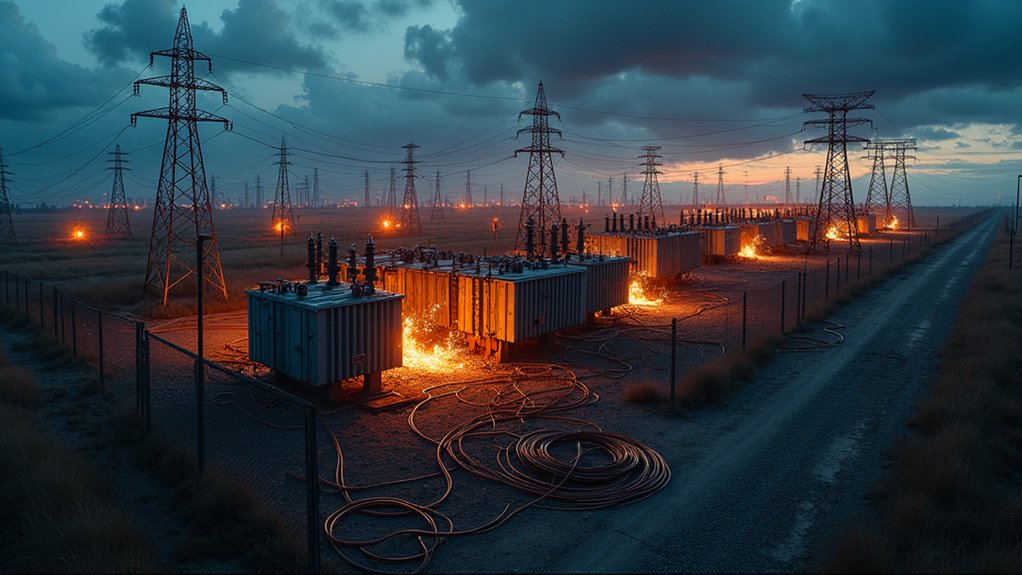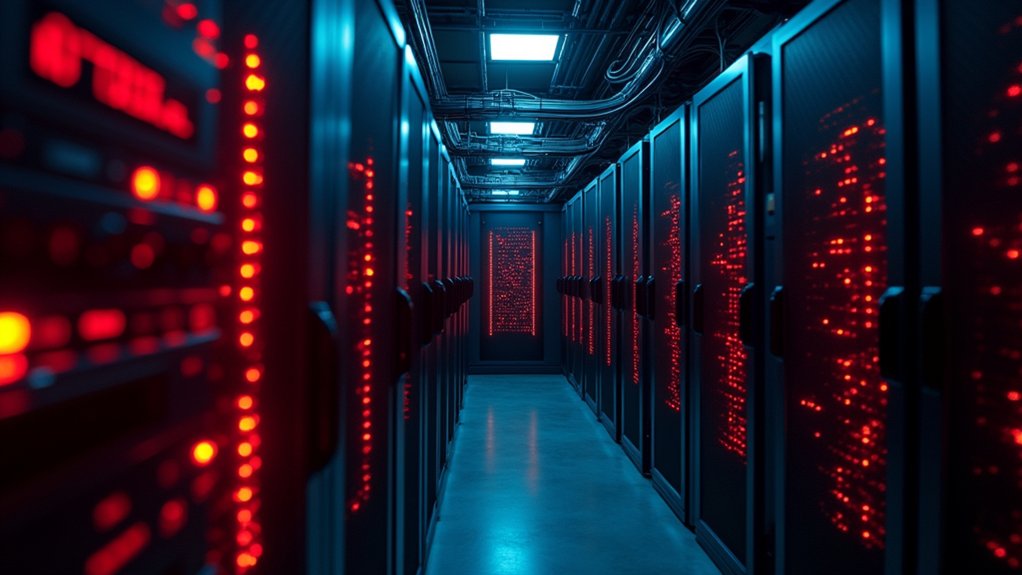As cyberattacks on critical infrastructure surge to unprecedented levels, America’s electrical grid faces an escalating array of threats that challenge the reliability of the nation’s power supply.
Between 2023 and 2024, cyberattacks on U.S. power grid infrastructure increased by 70%, with ransomware increasingly targeting operational technology systems that directly disrupt grid operations. Phishing campaigns now particularly focus on compromising employee credentials linked to energy utilities, whereas the Cybersecurity and Infrastructure Security Agency experienced a 17% budget reduction in 2025, considerably weakening federal cyber defense capabilities.
Physical attacks present an similarly alarming trend, with direct assaults on power grids increasing by 70% in 2025. The Electricity Subsector Coordinating Council‘s Information Sharing and Analysis Center recorded over 2,800 physical security threats in a single year, whereas copper theft has surged as prices rose 30% since 2019.
Substations and transmission lines remain primary targets, with repairs from physical intrusions proving costly and time-consuming, resulting in extended outages that compromise public safety.
The grid’s vulnerability stems partly from aging infrastructure, as 70% of U.S. transmission lines exceed 25 years old and approach end-of-life status.
Older substations frequently lack advanced security measures such as electric fencing and closed-circuit television systems, whereas legacy control systems operate without integrated cybersecurity or modern physical protections. These deteriorating systems amplify risks of failure, outages, and successful attacks.
Rising data center demand compounds these challenges, with power consumption tripling over the last decade owing to artificial intelligence and cryptocurrency mining expansion.
A recent incident saw 60 data centers disconnecting simultaneously, creating excess electricity and cascading outage risks that grid operators struggle to manage.
Insider threats add another layer of complexity, as utility employees and contractors with system access pose considerable operational risks through malicious intent, ideological motivations, or simple negligence. The Volt Typhoon campaign demonstrated how foreign adversaries can maintain covert access to electric grid systems for nearly 300 days, potentially preparing for future large-scale disruptions.
Detection and prevention of insider risks remain challenging, particularly regarding sensitive legacy SCADA systems. Infrastructure in remote regions proves especially vulnerable to coordinated multi-faceted attack strategies that combine physical and cyber elements, creating cascading effects on critical services nationwide. Electricity networks have transformed from isolated systems to interconnected smart grids that exponentially increase the attack surface and expose systems to data theft and operational compromise.









